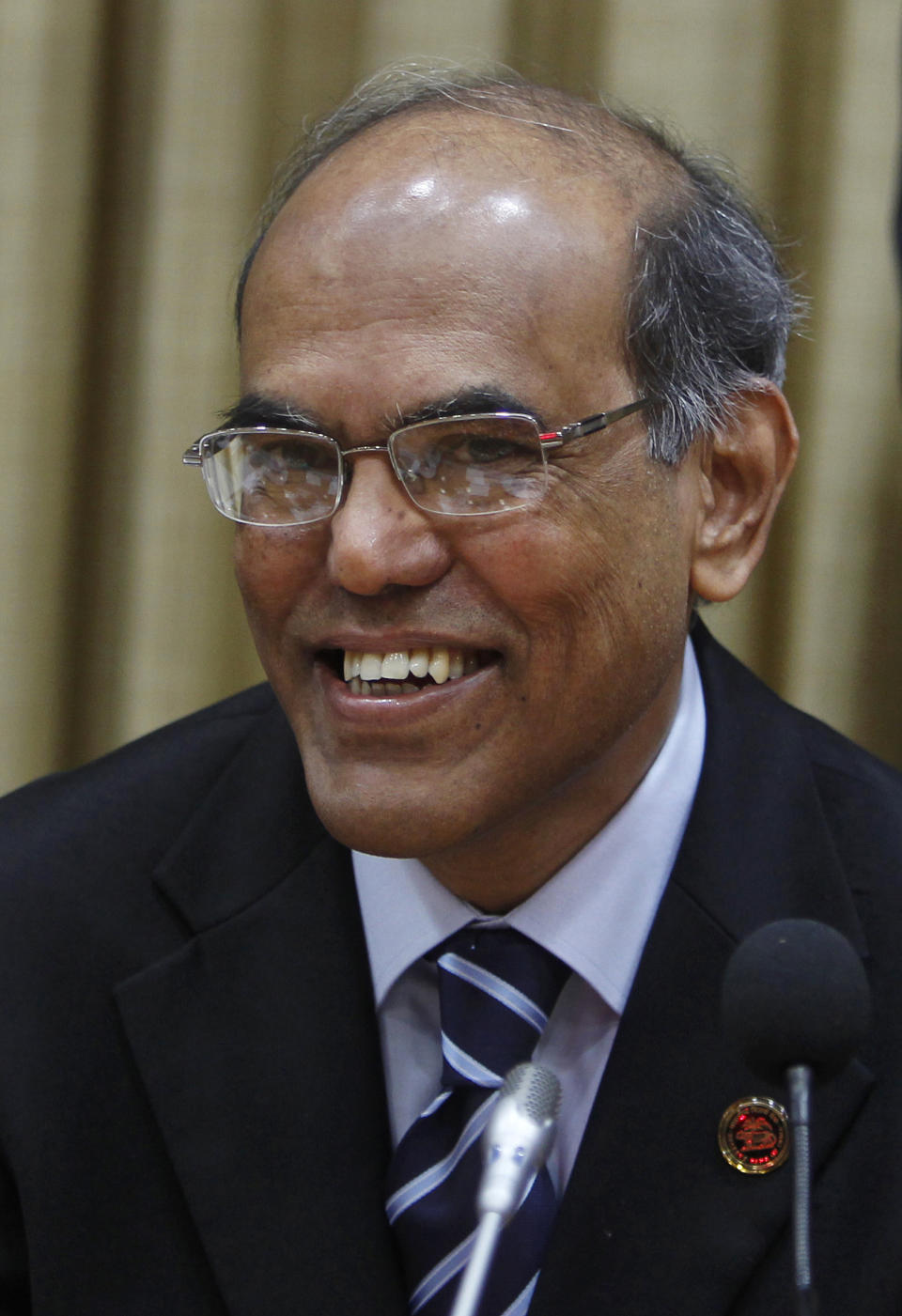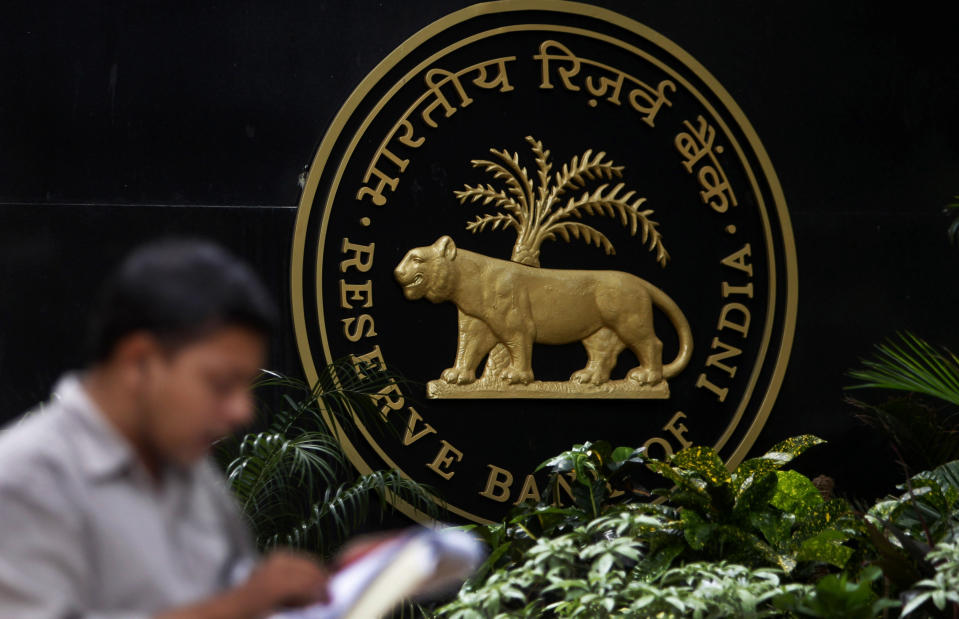India's surprise rate cut is first in 3 years
MUMBAI, India (AP) — India's central bank cut its key interest rate by a bigger-than-expected half percentage point Tuesday, the first cut in three years, and warned that stalled reforms are diminishing the growth potential of Asia's third-biggest economy.
The Reserve Bank of India cut its short term lending rate — the repo rate — to 8.0 percent from 8.5 percent. Many economists had expected a quarter point cut.
The bank said it decided to cut the rate because economic growth has slowed to below what it believes is its long-term trend rate, which in turn is contributing to a moderation in core inflation.
The last interest rate cut was in April 2009. Between March 2010 and October 2011, the bank waged a lonely battle against inflation, raising interest rates by 3.75 points in 13 consecutive rate hikes.
The central bank cautioned that the scope for further rate cuts is limited, because inflation risks remain and growth has not slowed dramatically below what may be a new and lower normal for India, which once aspired to double-digit economic growth.
The bank said India's "trend" rate of growth, or the amount the economy can expand without stoking inflation, had declined from its pre-financial crisis peak of around 8.5 percent to about 7.5 percent. The bank blamed supply bottlenecks, especially in infrastructure, energy, minerals and labor, for the economy's diminished potential, and said unblocking such constraints was "an imperative."
The RBI expects India's economic growth to pick up to 7.3 percent in the current fiscal year from 7.0 percent for the fiscal year ended March 2012. It predicted that inflation, which was 6.9 percent in March, would moderate to 6.5 percent by next March.
The RBI's policy document can be read as a tissue of complaint against New Delhi, shot through with reminders about the limitations of monetary policy to bring about economic change.
"Monetary easing by the RBI is a necessary condition but may not be a sufficient condition for investment sentiment to revive," RBI governor Divvuri Subbarao said.
The bank alternated between admonishing and pleading with New Delhi, offering India's government a long wish list. Stop borrowing so much and crowding out private players from debt markets. Cut subsidy spending. Control the budget deficit. Do more to fix demand imbalances in India's food supply, particularly for protein-rich foods such as pulses, meat, eggs and milk, which have seen double digit price rises.
The bank's most specific, and sternest, admonition was for New Delhi to raise subsidized fuel prices, a move Prime Minister Manmohan Singh also suggested was necessary when the finance ministry presented the annual budget in March.
New Delhi's ruling Congress Party, however, has proven itself unable — or unwilling — to contain spending and enact tough policy change. It was routed in recent state elections, further weakening its ability to corral coalition partners and state leaders needed to push through reforms in India's unruly democracy.
"I'm not sure another wish list will make a difference in actual changes on the ground," said Abheek Barua, chief economist at HDFC Bank in Mumbai.
"That's the paradox. Despite all these things they want the government to do as preconditions for monetary easing, even in the absence of these things, they've cut rates."
Subbarao said weak industrial production and an encouraging decrease in core inflation — which came in below 5 percent in March for the first time in two years — contributed to the decision to cut rates. He said the bank also noted the government's March pledge to trim the fiscal deficit from 5.9 to 5.1 percent of GDP.
"Like everyone else, we are very concerned about the government's delivery on that," he said. "Therefore, we reiterated the message."
The central bank also said given weak global capital flows to emerging markets, financing the current account deficit — which has ballooned as the cost of importing oil has shot up and export demand has weakened — will "continue to pose a major challenge."
The bank warned that India's December quarter current account deficit — a "very high" 4.3 percent of gross domestic product — was "unsustainable and needs to be contained."
"They've taken a response of supporting growth to the extent possible. Monetary policy can only bring India back to its potential growth rate, not beyond that," said Samiran Chakraborty, head of research at Standard Chartered in Mumbai.
"The tension between the fiscal side and the monetary policy side will play on for most of this year."




